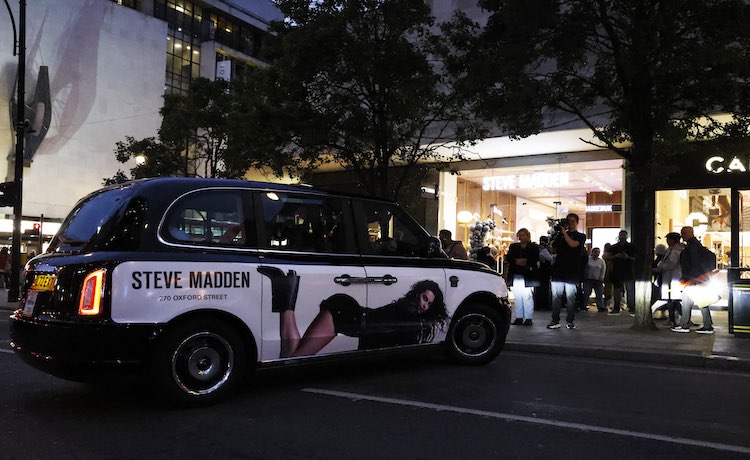The Importance of Reach and Frequency in OOH Advertising

We all come into contact with Out-of-Home ad campaigns on a regular basis, whether in the form of billboards, posters, street furniture, bus shelters, transit media, on-vehicle advertising and so on.
A key benefit of Out-of-Home advertising is the vast reach it provides, connecting with audiences in an unobtrusive yet unavoidable way.
Another important element of Out-of-Home advertising is frequency.
Luckily, as the UK’s largest network of carbon-neutral moving media, Drovo can help with both of these. Here we dive into the importance of both reach and frequency in OOH and how they can be delivered across the various OOH formats.
What Is Reach?
The reach of an OOH advertisement is the number of people within a target audience who are exposed to a single ad.
Reach, however, does not increase with multiple exposures to an advertisement from the same viewer. Multiple exposures from the same viewer is a term called frequency; more to come on that later.
What are the Benefits of High Reach in OOH Campaigns?
Reach is an important element of any OOH campaign strategy. High levels of reach mean a more cost-effective campaign and broader awareness of your brand.
Placing OOH ads in densely populated areas with high footfall and traffic will increase the reach of your campaigns.
What is Frequency?
Ad frequency is the average number of times an advertising message gets shown to a single user over a time period. You can calculate campaign frequency in OOH by dividing the total number of target audience impressions by the number of unique people reached.
The rule of 7 says that, on average, consumers will need to be exposed to your brand around 7 times before they will take action or make a purchase from your message. Therefore, having your OOH ad seen 7 times by each exposed viewer is a frequency to aim for.
What are the Benefits of High Frequency in OOH Campaigns?
Frequency – or repetition of your advertisement – is a massive driver in building brand awareness and leading consumers to take action. As mentioned above, audiences generally need to be exposed to a brand message at least 7 times before taking action. The higher the frequency of your campaign, the more likely those audiences exposed to your message will be to decide to make a purchase, visit a store, download an app, go to a website, etc.
Achieving Reach and Frequency in OOH
As we’ve previously discussed, every OOH format has its unique strengths. The right placements, when leveraged properly, can drive favourable outcomes and leave lasting impressions in consumers’ minds.
In the most basic sense, the success of an OOH campaign often comes down to the levels of reach and frequency delivered (obviously other elements are important, too, such as creative message and context of ad delivery). Here we’ll drill down further into which outdoor media formats are known to deliver the highest levels of reach and frequency.
OOH Formats That Generate Mass Reach
When it comes to mass reach, large format OOH rules. Think roadside bulletins, wallscapes, and the massive digital billboards you see in Piccadilly Circus or Times Square.
Alongside these obvious format choices for reach, though, taxi media is also a large driver of reach. A fully wrapped taxi is, essentially, a moving billboard, and imagine what the effect is when you have hundreds of fully wrapped taxis weaving throughout all areas of the city! The best part? London black taxis are also very positively received by audiences and are instantly recognisable due to their iconic reputation. Plus, given the street-level positioning of taxis, it takes very little effort for audiences to see and engage with their adverts.
Get in contact with Drovo
Striving to make a genuine impact on OOH audiences? Taxi advertising campaigns with Drovo are the solution.
Speak to the teamFormats That Increase Frequency
Transport or Transit OOH media – consisting of all formats related to bus, rail and other transportation systems – is commonly used as a frequency driver. This has to do with the network-based nature of transit media and how it is experienced by audiences, often on a routine basis. Generally speaking, a single person will be exposed to the same transit campaign across a train, bus or underground system multiple times throughout their weekly commutes or trips to the city centre.
Within transit, you also have taxi media, which as we discussed previously is a format that already produces vast reach due to the widespread coverage of each taxi throughout all areas of the city.. Taxi media can also offer very high frequency, a factor that is determined by the number of taxis booked within a single campaign.
As a premium operator of moving media, Drovo not only offers taxis but also a network of high quality on-vehicle screens that provide enhanced flexibility for targeted or dayparted frequency (i.e scheduled to run during specific times of day) throughout a campaign.
As previously outlined, we know Drovo’s media solutions offer high reach across the top UK markets. By also having the ability to deliver impressive frequency, taxi and on-vehicle media are well-positioned to be key contributors to your next OOH campaign.
Get in contact with Drovo
Keen to learn what optimal reach and frequency in a campaign with Drovo might look like? Speak to our experienced sales team who will be happy to work within your guidelines to produce the most effective and efficient campaign.

Interested in running taxi campaigns with Drovo?
Since you got to the end of the blog, let’s have a chat about taxi campaigns
Speak to the team